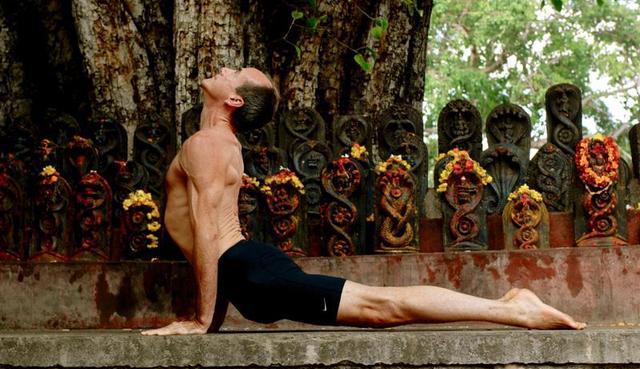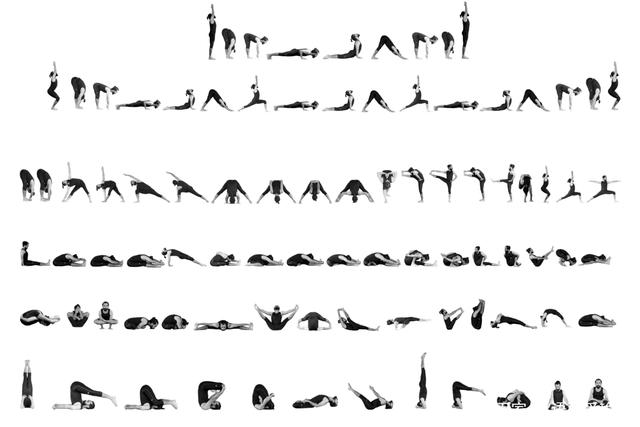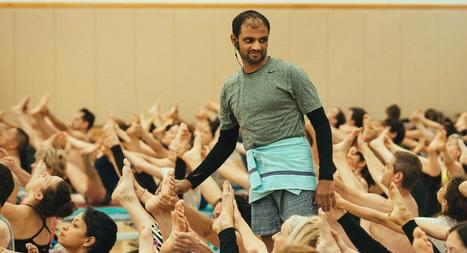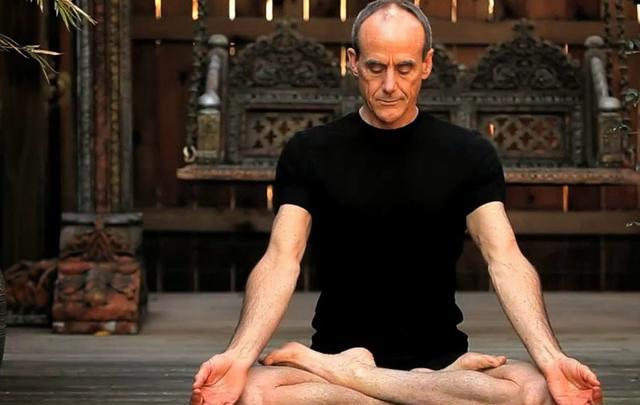Ashtanga Yoga is a series of yoga postures practiced in a specific sequence that emphasizes the flow and breathing between the poses.Ashtanga Yoga consists of six sequences of progressively increasing difficulty, they are: a beginner series, an intermediate series and four advanced sequences. Each practice begins and ends with a bhajana.
Ashtanga vinyasa yoga is usually taught in the Mysore style, where the role of the yoga teacher is to guide and adjust each practitioner individually. Practitioners practice at their own pace.
Origin of Ashtanga Yoga

Ashtanga yoga was created by the Indian teacher Sri K. Pattabhi Jois. The classical form of ashtanga was originally outlined in Patanjali's Yoga Sutras, the seminal yoga text that defined the philosophy and practice of yoga. Patanjali defined "ashtanga" as or "the eight branches of yoga," which are: ethics, self-purification and learning, asana, breath control, mindful concentration, meditation and samadhi. Pattabhi Jois combined the philosophy of Patanjali with modern tandem yoga to form a new type of yoga, ashtanga vinyasa yoga, which allows both exercise and meditation.
The Three Principles of Ashtanga Yoga

The practice of ashtanga yoga is rooted in the concept tristhana (trinity). Practitioners focus on introspection and the three pillars of tristhana are
Toning: Breath, or pranayama, which is the foundation of the yoga practice, awakens your life force. Ashtanga yoga uses the breathing technique ujayi pranayama
Asanas: Asanas are the poses that you flow through in your yoga practice. In Ashtanga Yoga, asanas are performed in a strict sequence that does not change.
Point of Gaze: Dristhi refers to the place where you gaze during your yoga practice. this element of tristhana brings your mind into the practice, increasing concentration and self-awareness as you breathe and move.
The Three Tips for Practicing Ashtanga Yoga

Ashtanga yoga requires a lot of study, and strict discipline.
Move at your own pace. Ashtanga yoga can be difficult, so it's best not to overdo it right away. Start small and make sure you understand and are familiar with each movement before attempting a full training exercise. In addition to memorizing the sequence of poses, Ashtanga requires a lot of practice. Practice each pose precisely and make sure you are comfortable with how your body feels and when you breathe. Misaligned spines, improper backbends or improper foot placement can reduce effectiveness and can lead to injury.
Focus. Focus on your breathing, not on how your posture looks. Try not to compare yourself to other practitioners. Focus on maintaining positive thoughts and improving your skills daily.
What is the difference between flow yoga and ashtanga yoga?

The main difference between flow yoga and ashtanga yoga is that the ashtanga series is a specific sequence of poses, whereas in flow yoga the sequence of poses can be varied.
Sr. Master Sri K. Pattabhi Jois states that Ashtanga should be practiced six days a week, although it is not required. There are no instructions for regular practice of flow yoga.
How to Practice Safely and Avoid Injury

Proper form and technique are essential to ensure the safety and effectiveness of your yoga practice. If you have a health condition, please consult your doctor before practicing. Poses can be modified to suit your individual needs.
Popular Articles
-
Treadmill PK elliptical machine, which is more fat burning?

-
 Menstrual period diet necessary | brown sugar glutinous rice balls
Menstrual period diet necessary | brown sugar glutinous rice ballsJan 05, 2025
-
 Why should men do more deep squats? How do you do a standard deep squat?
Why should men do more deep squats? How do you do a standard deep squat?Jan 05, 2025
-
 Allows you to hang more clothes in your closet
Allows you to hang more clothes in your closetJan 05, 2025
-
 The world's most fearsome typhoon, reaching 21
The world's most fearsome typhoon, reaching 21Jan 05, 2025
-

Photos
Top 10 most romantic locations in the worldJan 05, 2025







Comments
0